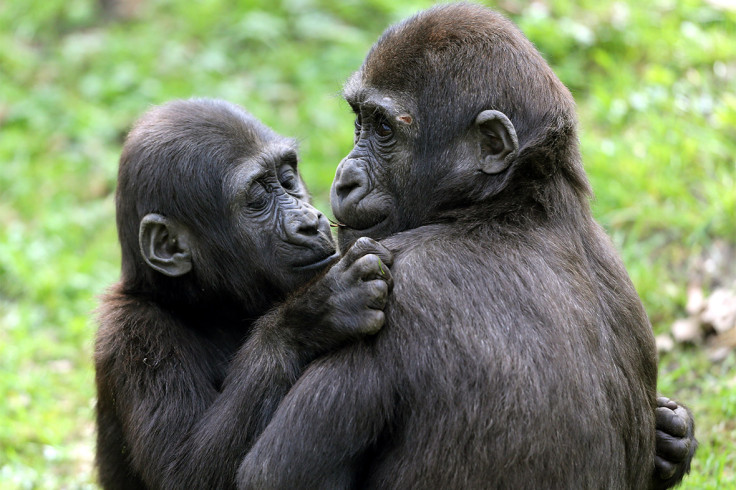Ebola: Great apes 'need a vaccine too' as virus has wiped out a third of their numbers in past outbreaks

Ebola is the single biggest threat to the survival of gorillas and chimpanzees, having wiped out a third of their populations since the 1990s.
With mortality rates as high as 95% for gorillas and 77% for chimpanzees, the virus constitutes a bigger threat to the apes than humans, says an expert suggesting a short-term vaccination strategy to prevent a near wipe-out of the populations.
A vaccine for gorillas and apes has been developed which has been proven both safe and effective. But it has not been tested by using the live virus on the vaccinated chimps, reports The Conversation.
Rough estimates by the World Wildlife Fund suggest there are up to 100,000 gorillas left in the wild.
In 2006, the Ebola virus wiped out more than 90% of the gorillas across western and central Africa, threatening the species with extinction.
In 2003 and 2004, the Ebola virus spread through a population of western lowland gorillas in the Republic of the Congo's Odzala-Kokoua National Park, cutting the numbers there to 40, down from around 380 great apes.
In 1995, an outbreak killed 90% of gorillas in a national park in Gabon.
The current Ebola outbreak in West Africa has not affected gorillas so far as they live mainly in Central Africa.
Besides Ebola, illegal trading in wildlife and bush meat, war, deforestation and other infectious diseases have plagued the great apes. Losing out vast tracts of their habitat to humans, the apes are thrown into closer contact than before, raising chances of a wipe-out in the case of an Ebola outbreak.
A recent study had noted how chimps could be wiped out from climate change-induced habitat loss by 2080.
Since 2008, the International Union for Conservation of Nature has listed the Eastern Gorilla as "endangered" and the Western Gorilla as "critically endangered".
The current Ebola outbreak has left over 8,500 people dead, with 21,614 cases confirmed. Unlike in apes, the mortality rate has been around an average of 50% with severe outbreaks notching up to a 90%.
© Copyright IBTimes 2025. All rights reserved.





















